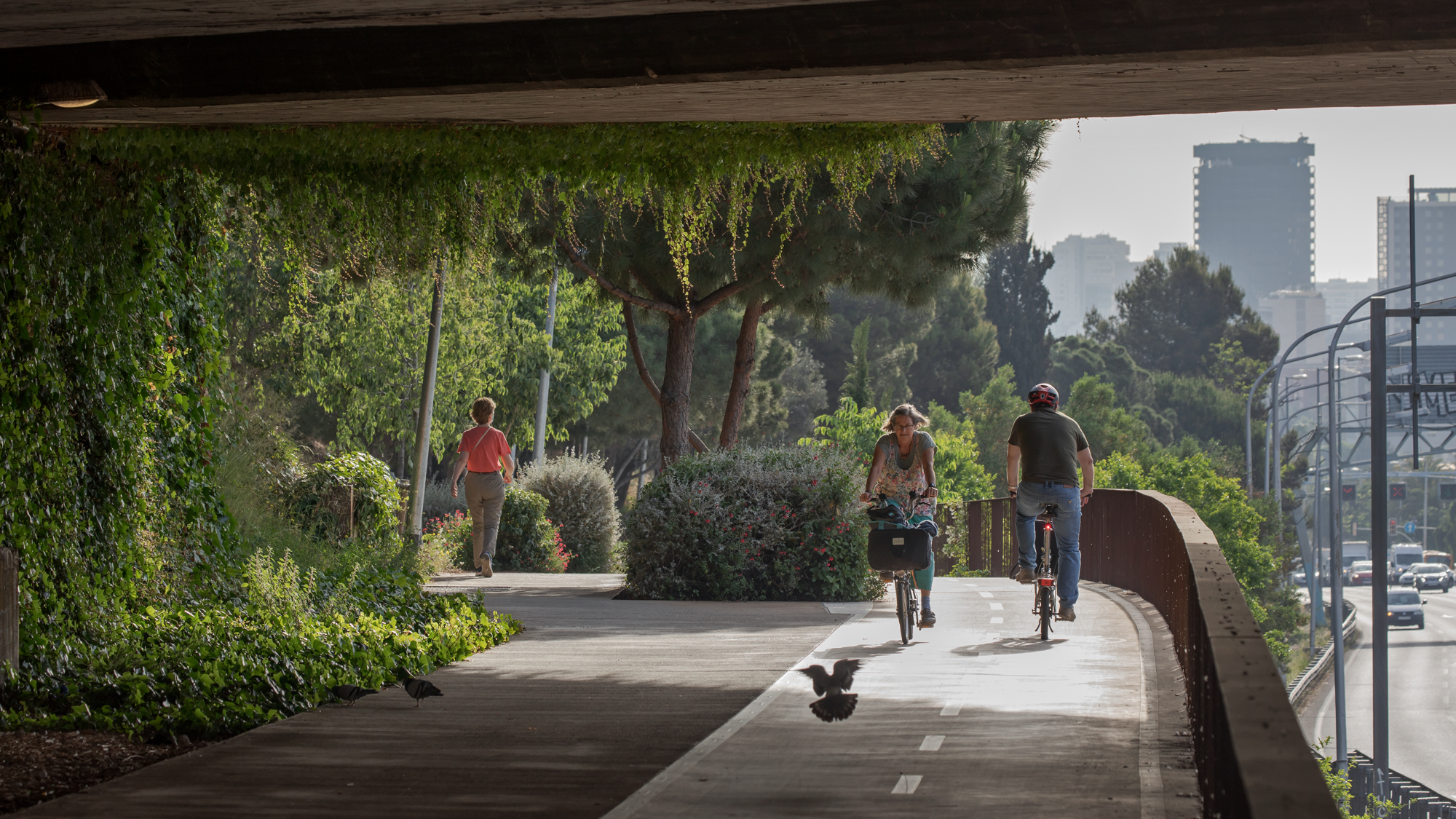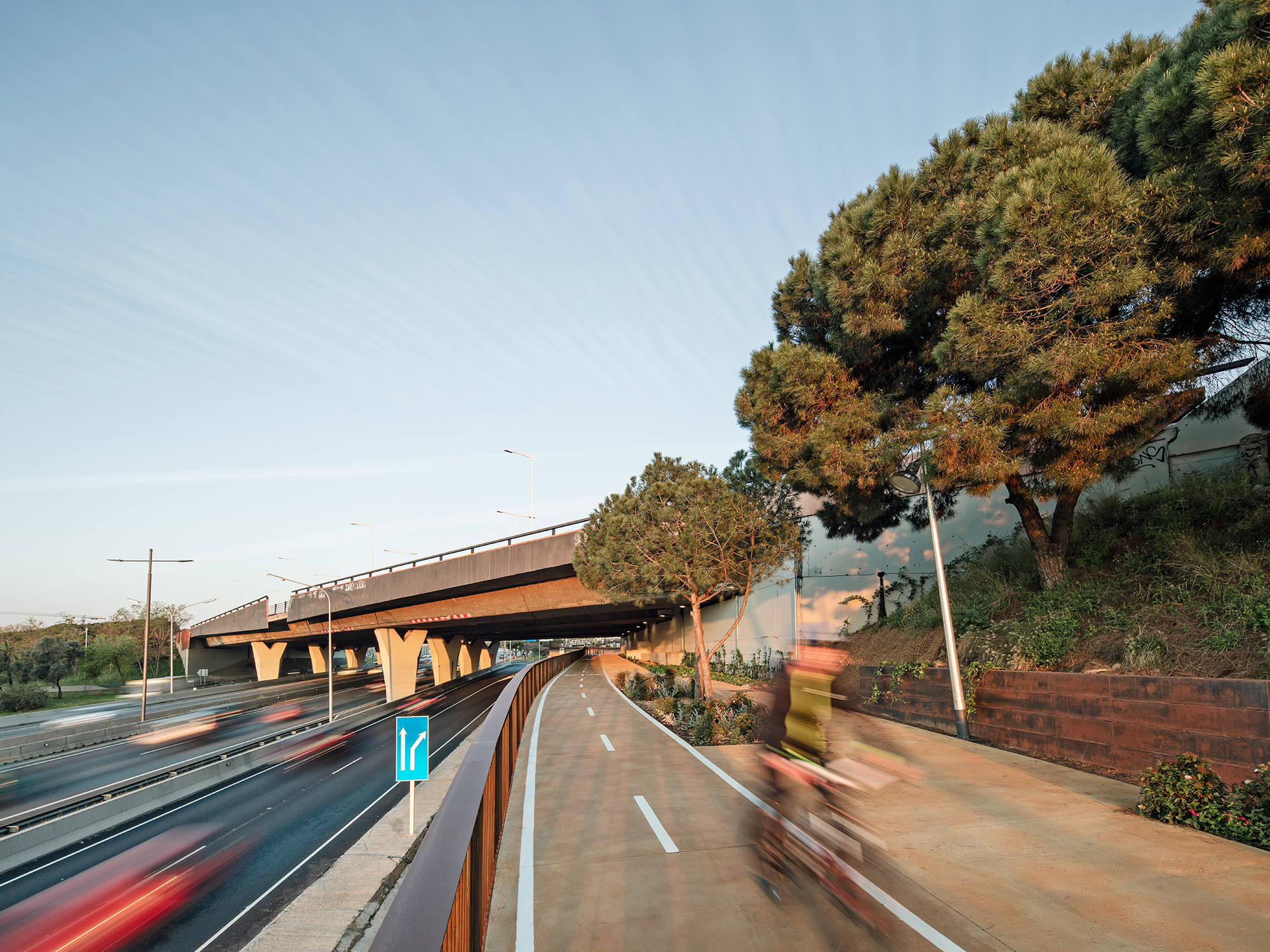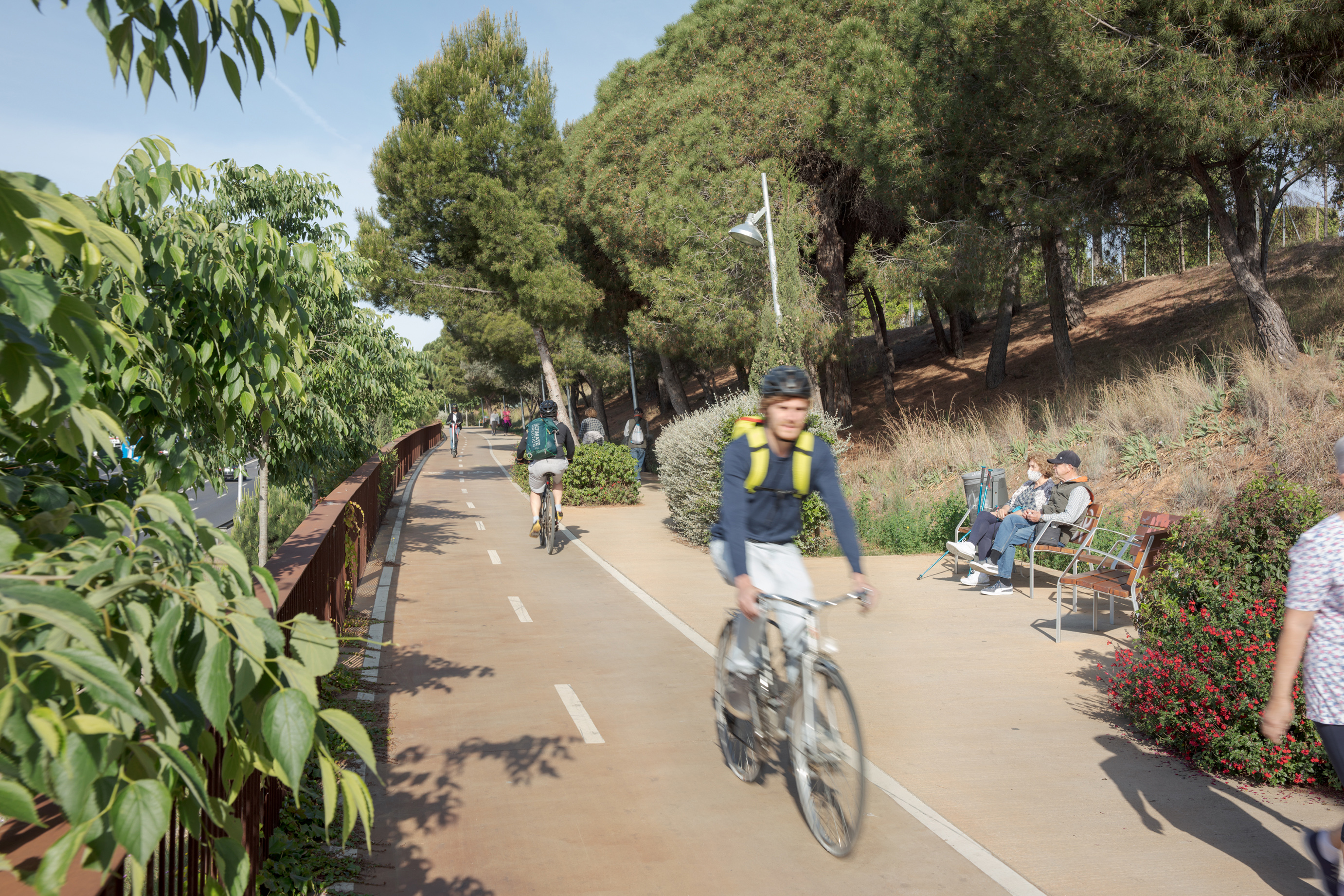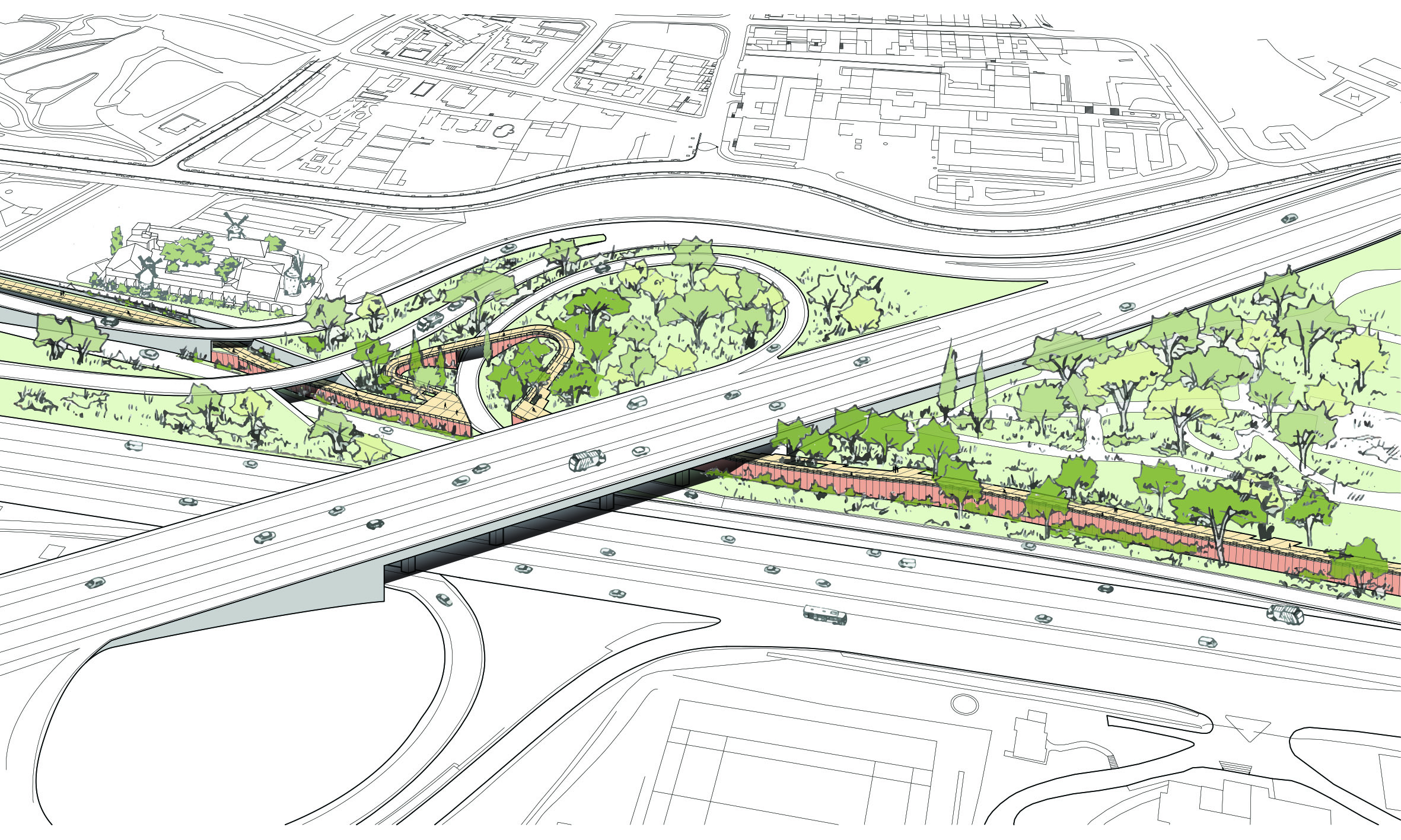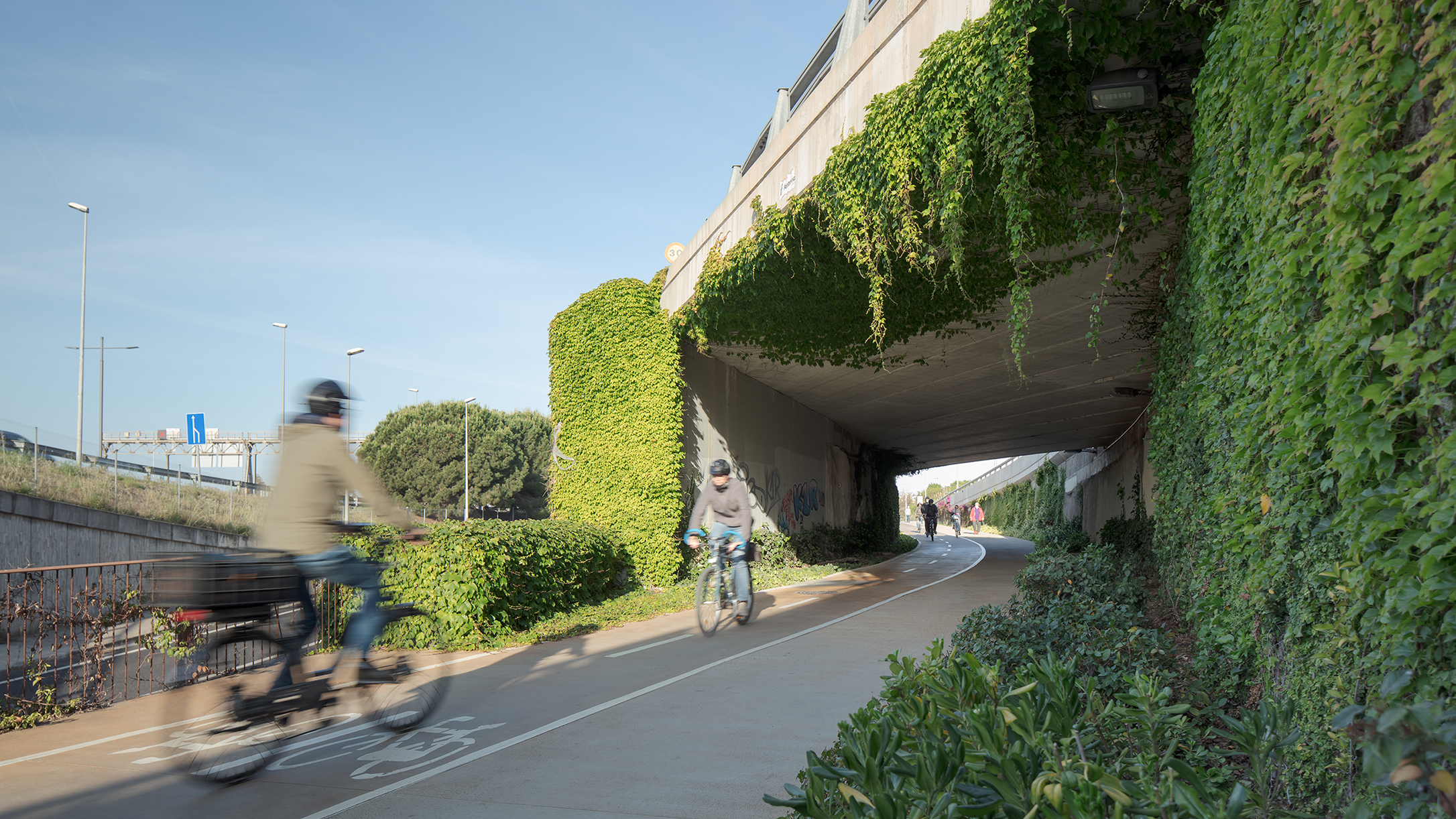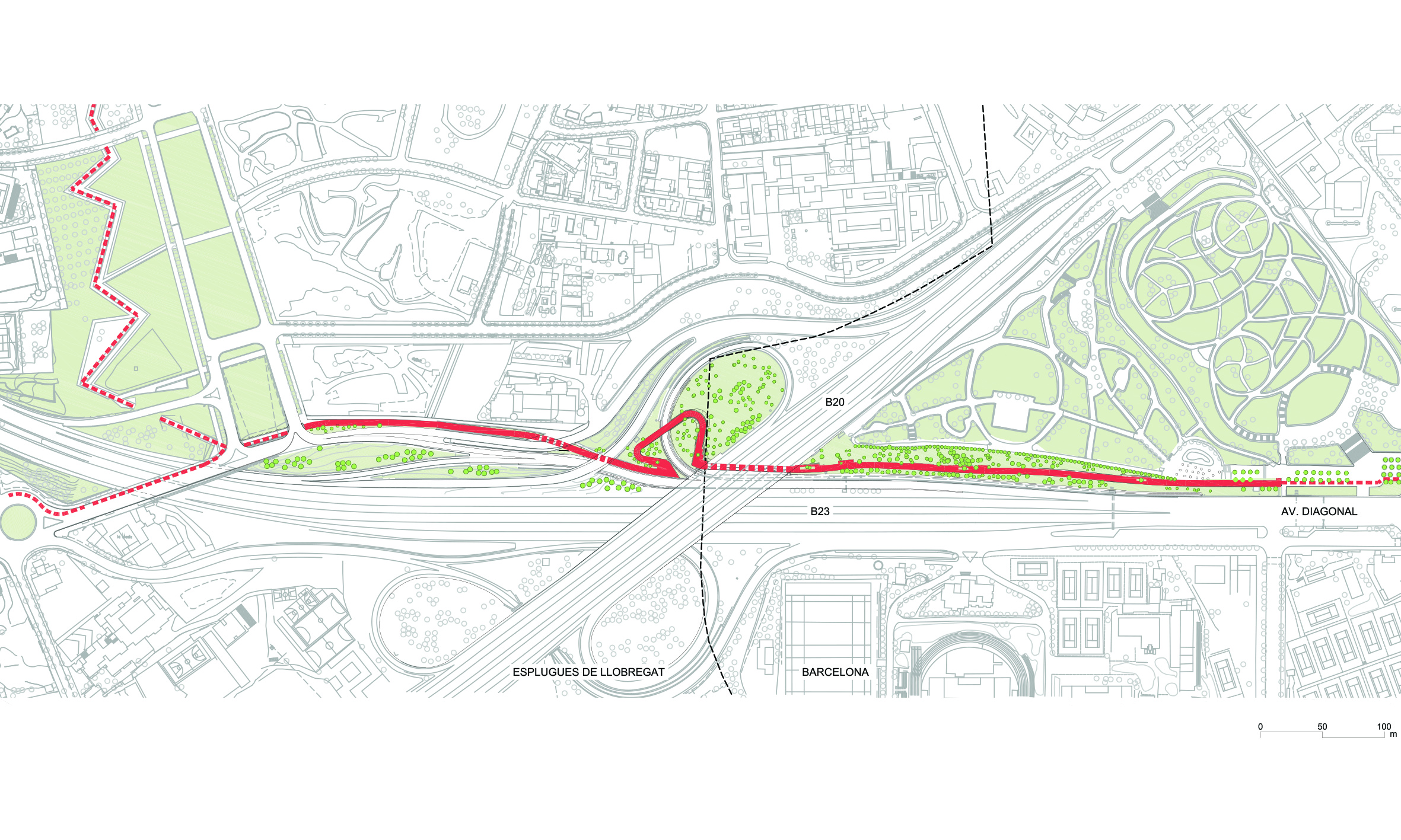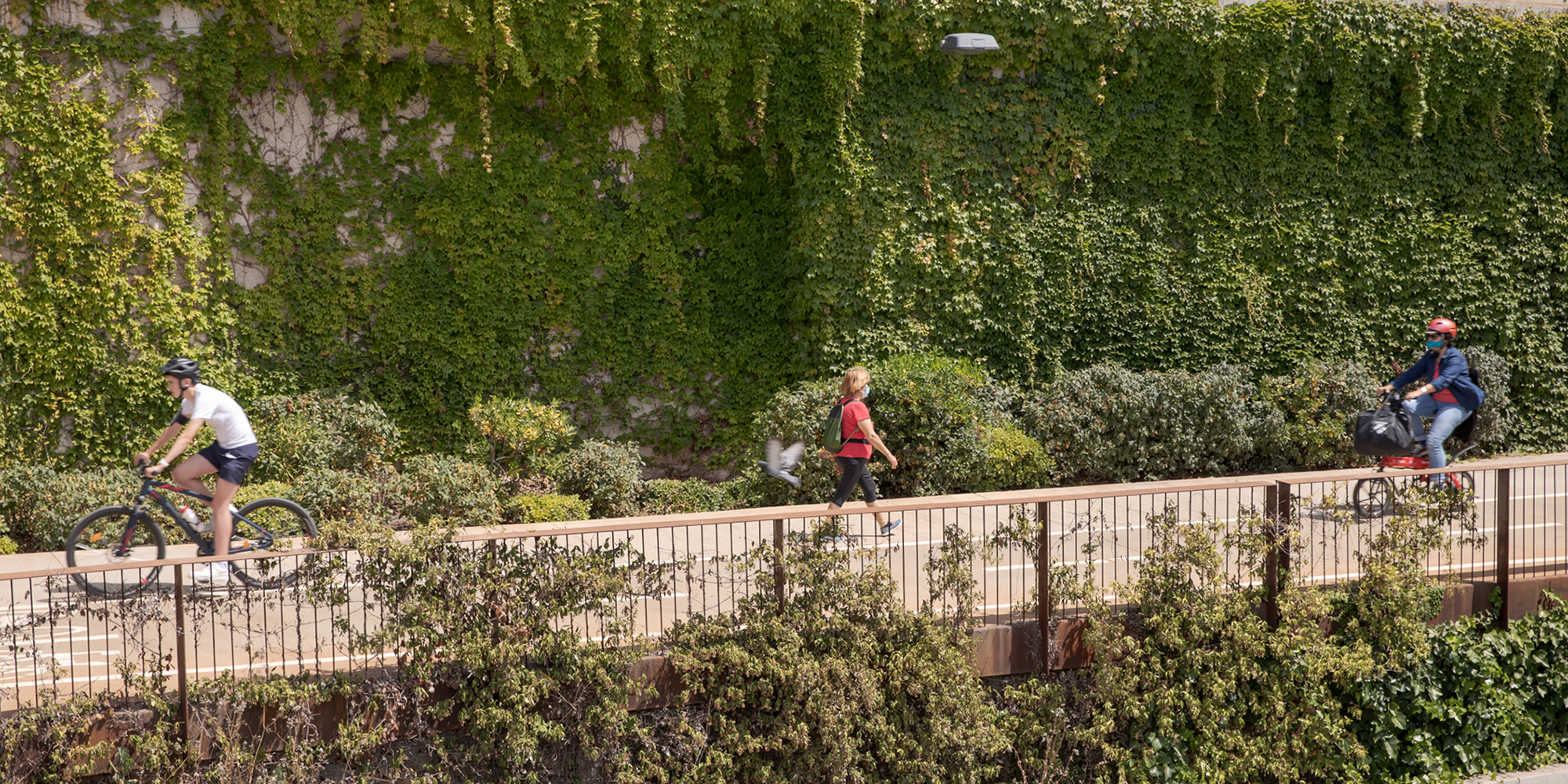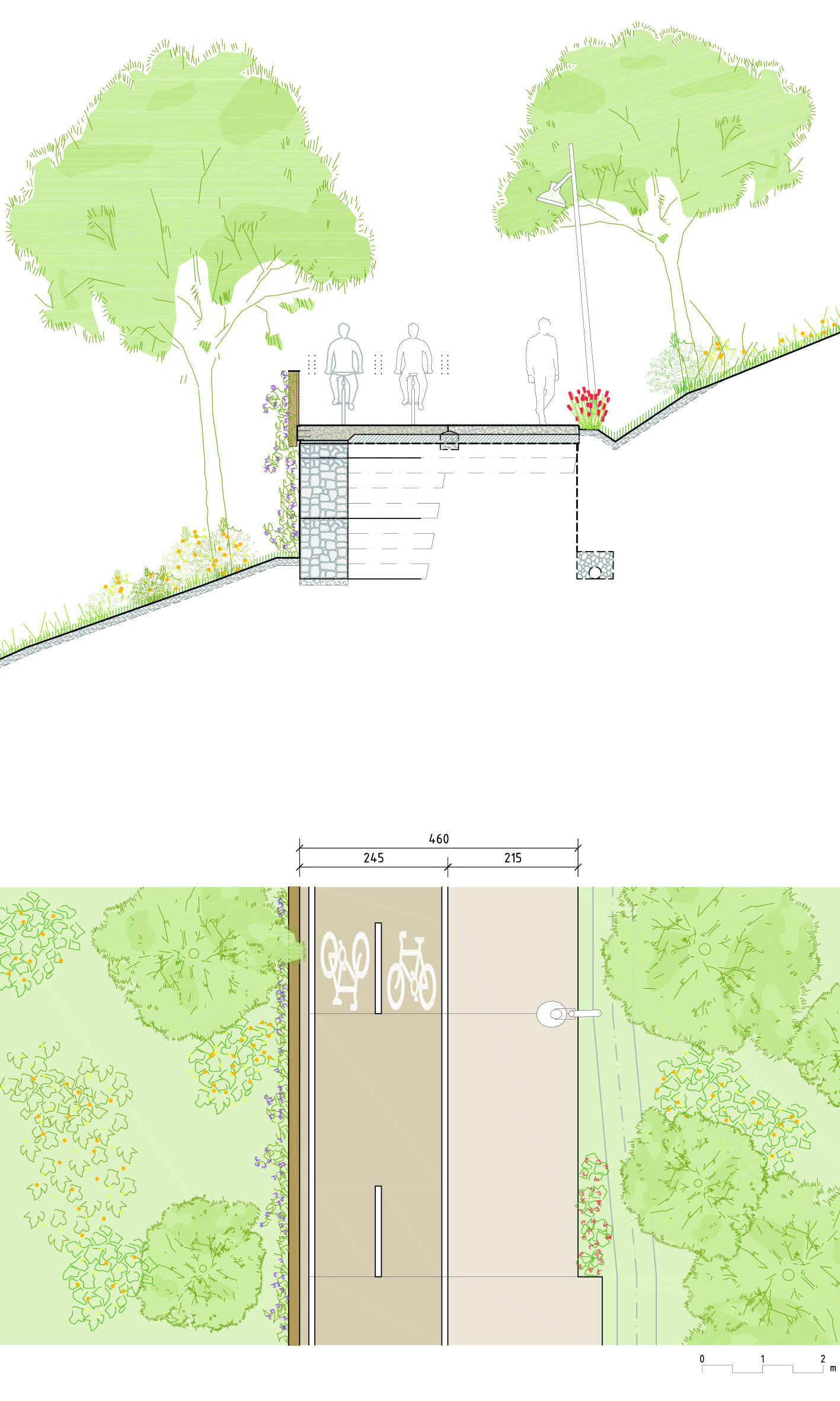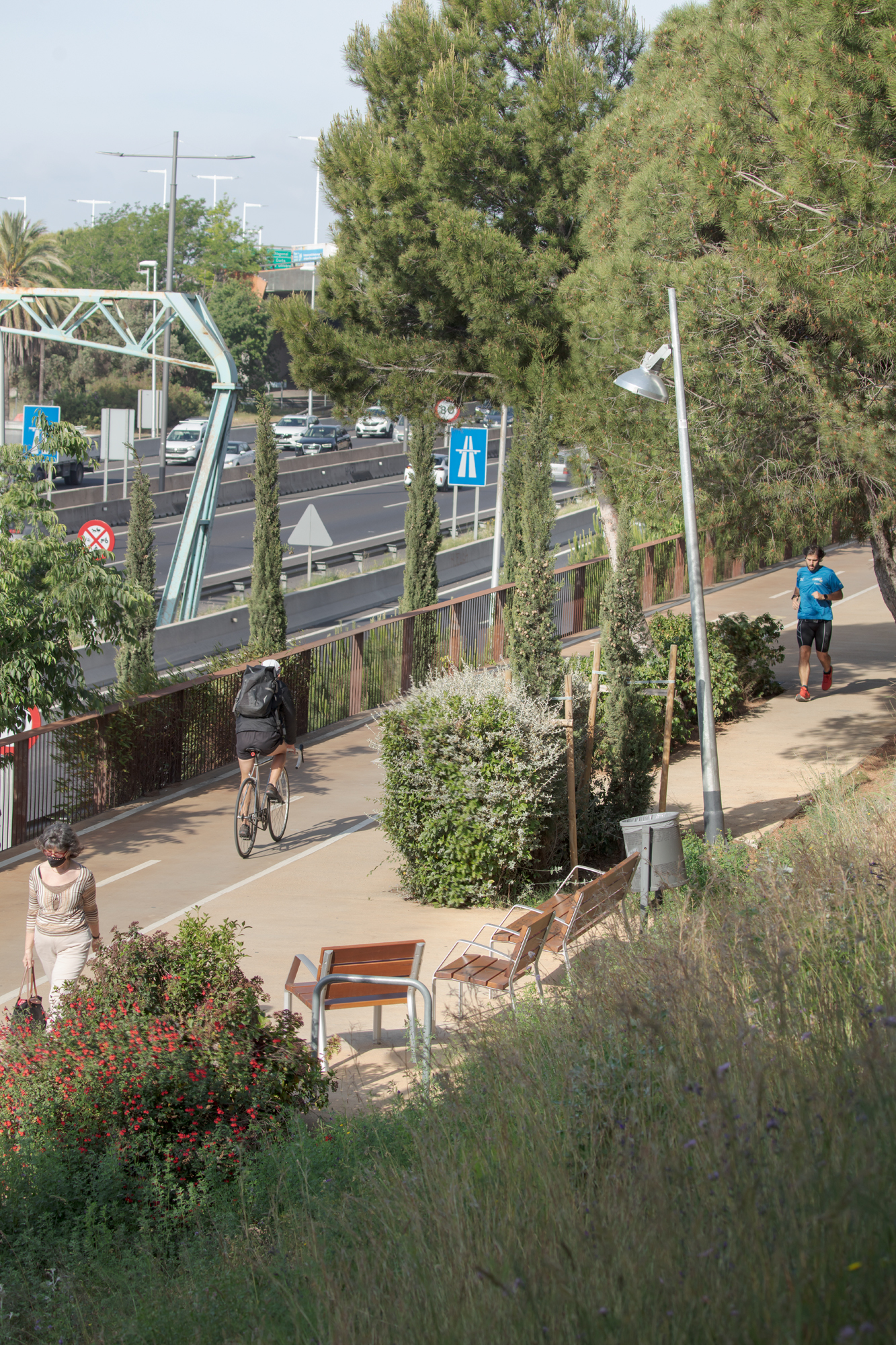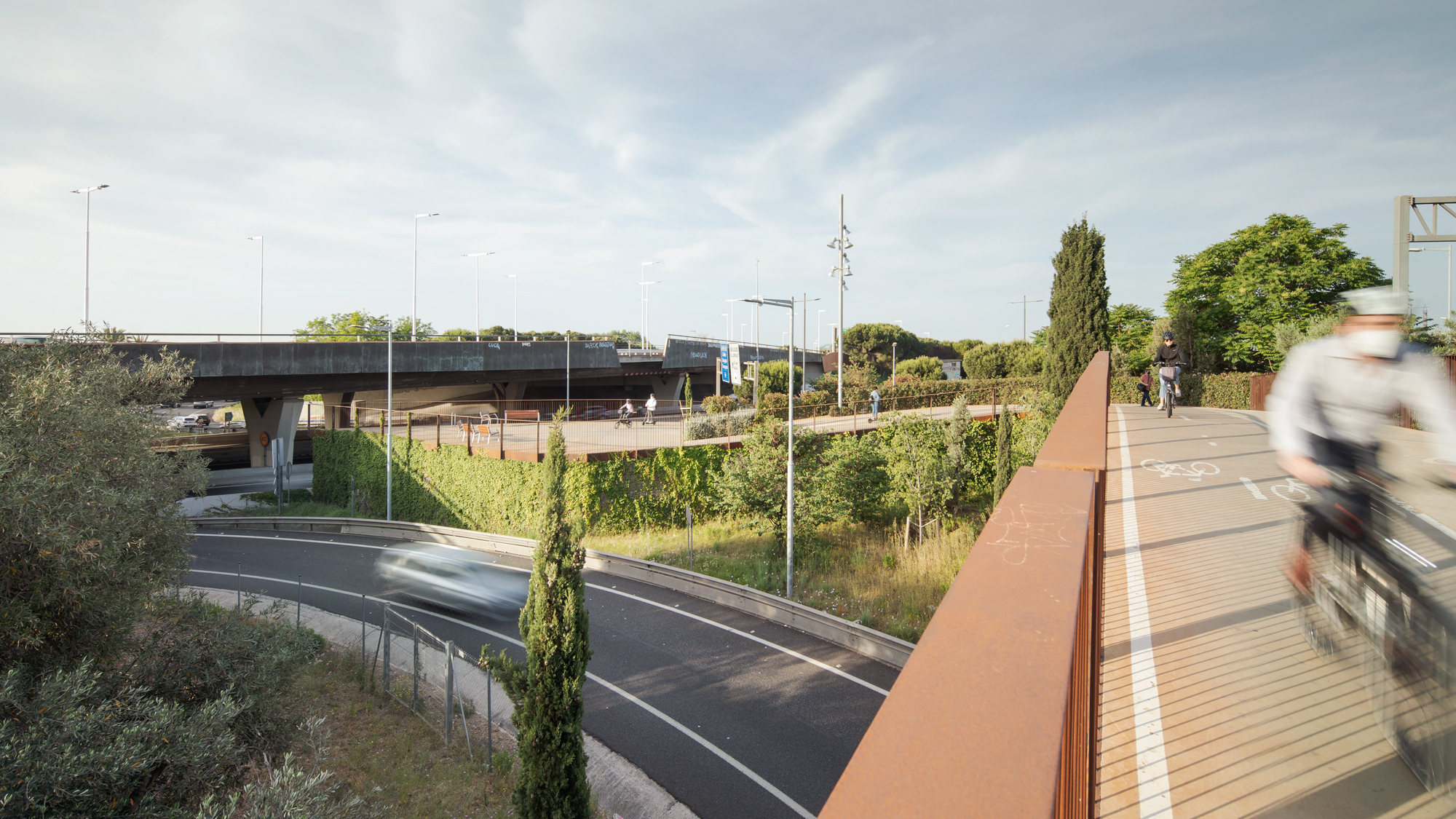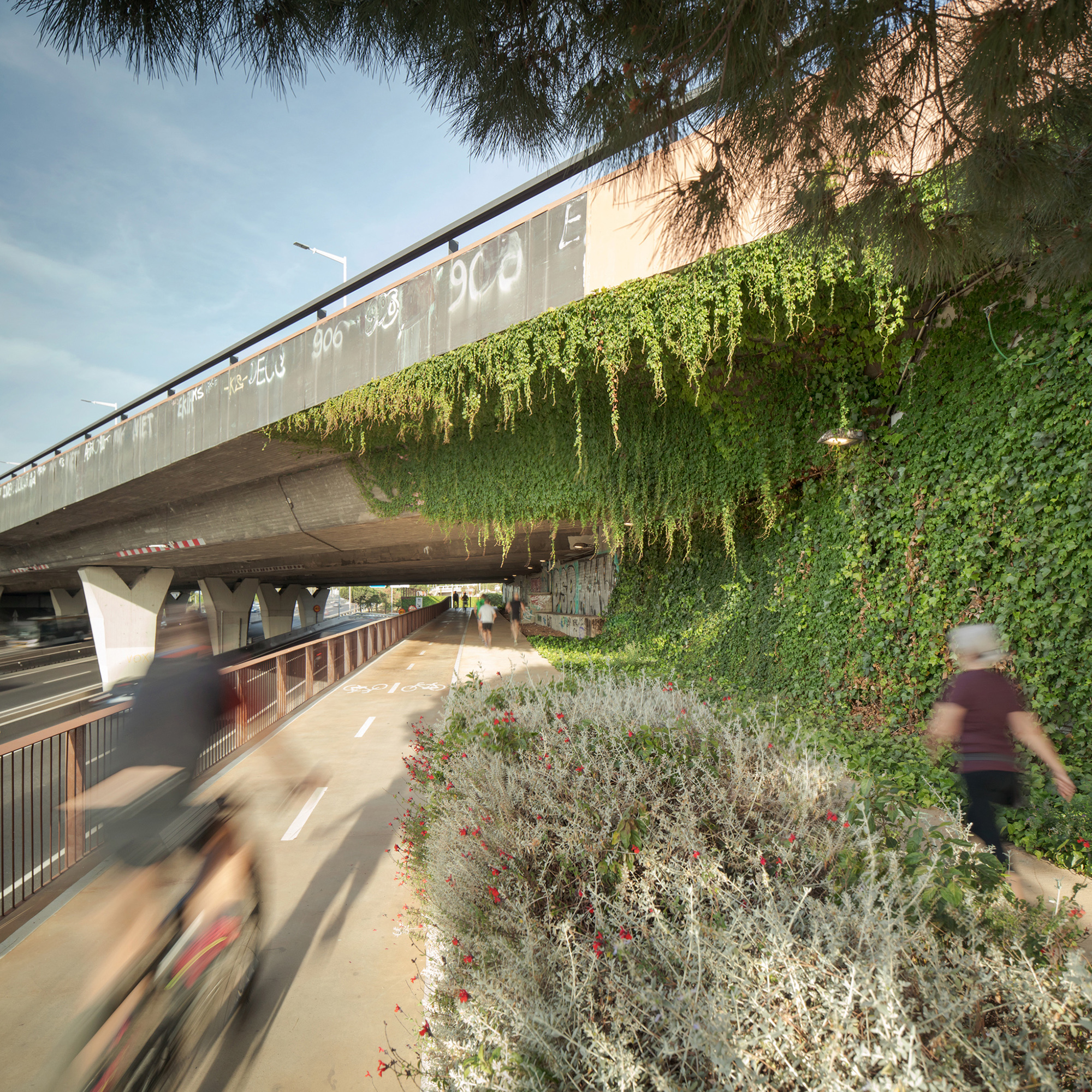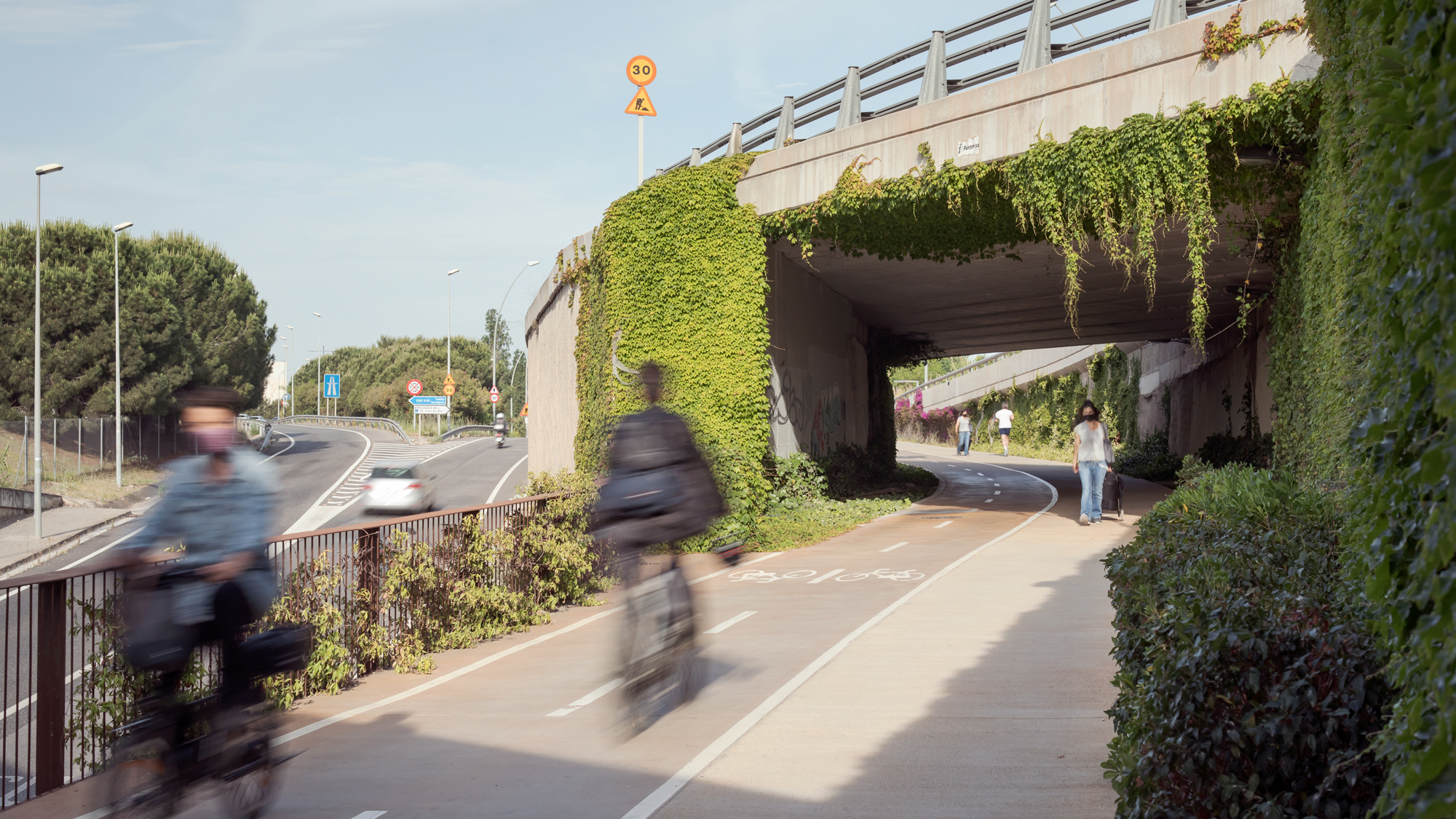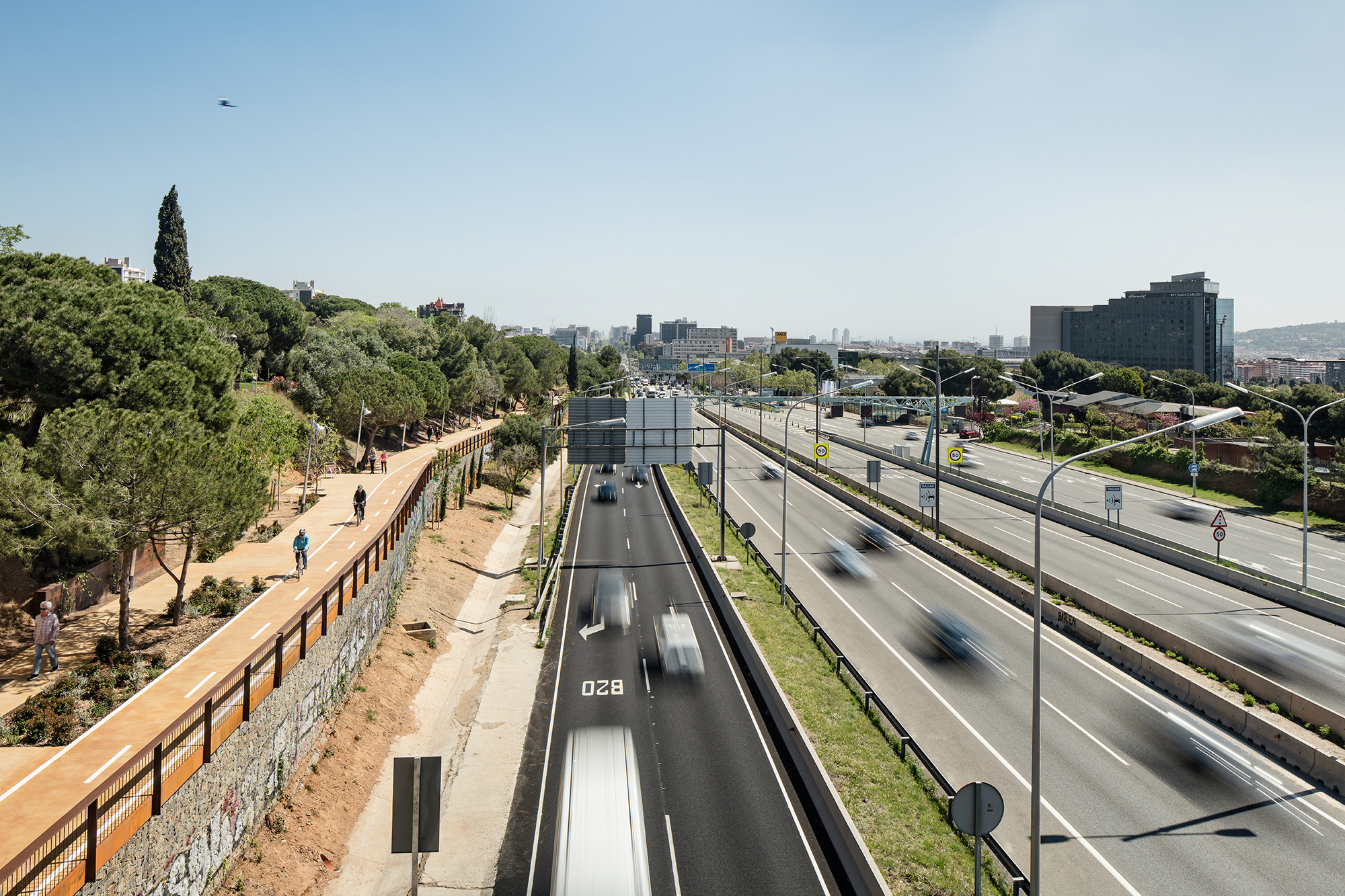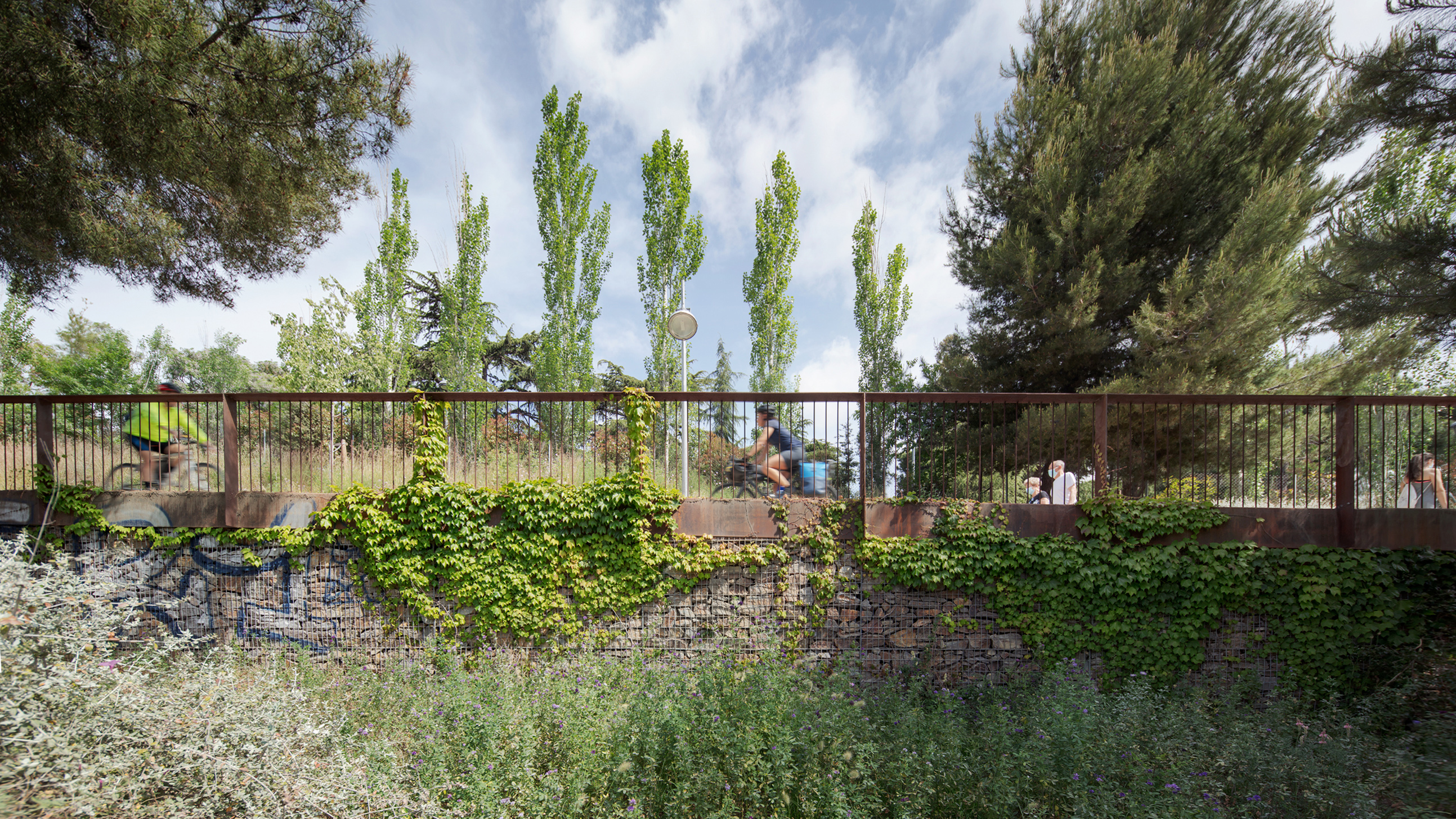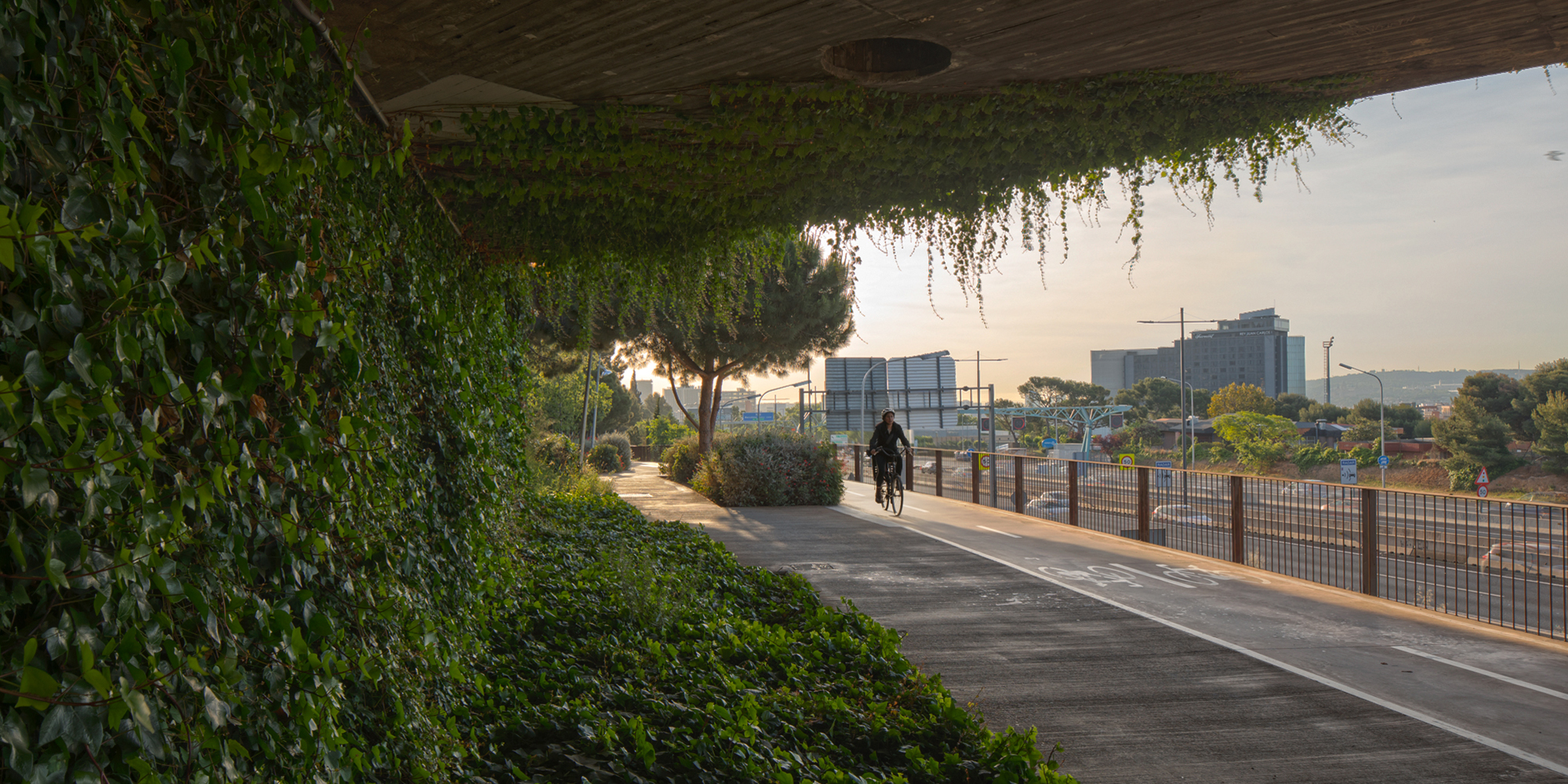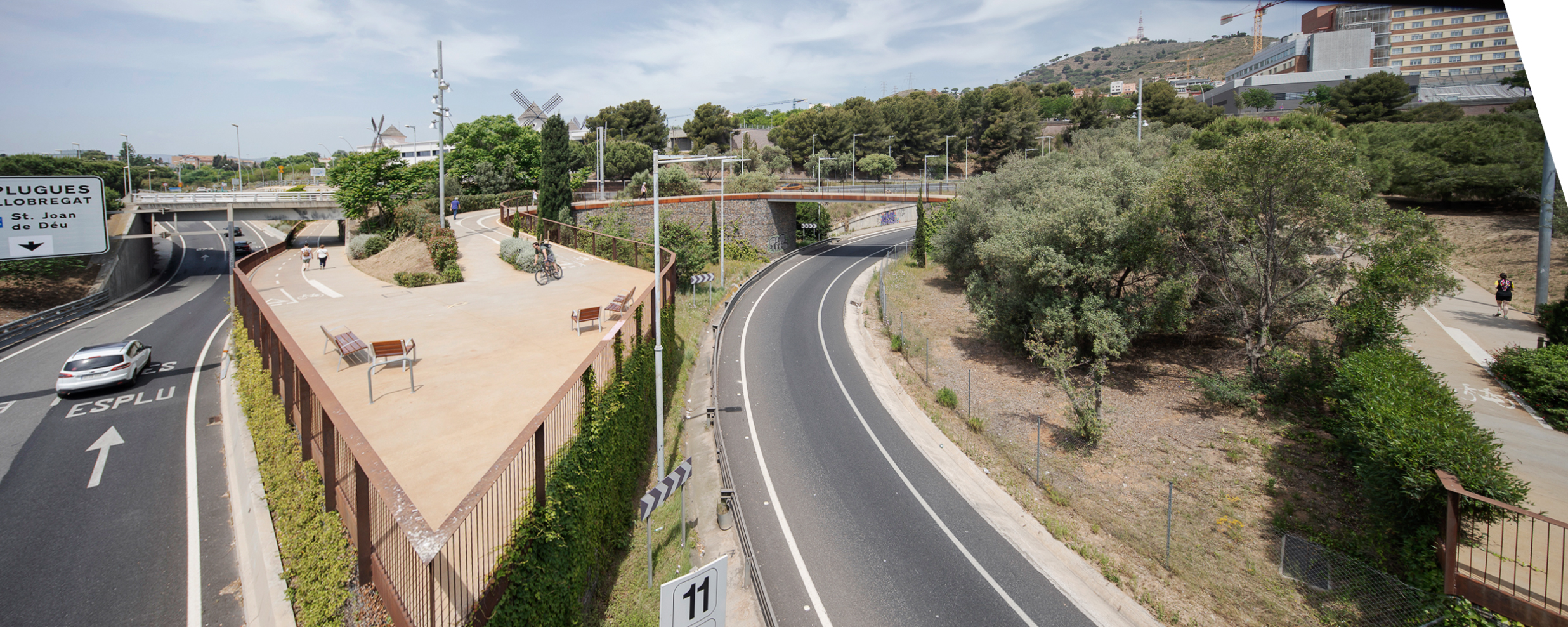Previous state
The junction where Avinguda Diagonal, in Barcelona, meets with Avinguda dels Països Catalans, in Esplugues de Llobregat, is one of the most difficult points in the metropolitan road network, with the intersection of the B-20 and B-23 motorways forming a barrier that has existed for the past 60 years.
Aim of the intervention
The project crosses this junction in the most direct way possible, taking a firm stand for non-motorised mobility and in defence of a more biophilic, healthier, less polluted and more accessible city. The new path aims to connect the two municipalities with routes for cyclists and pedestrians running through a renaturalised landscape.
The path connects the urban network of cycling lanes and pedestrian circuits with the system of open spaces in Collserola Park. The intervention has potential impacts beyond the scope and structure of the metropolitan territory, creating pedestrian and cycling links between Barcelona and the municipalities of the Baix Llobregat region: it connects the final section of Diagonal Avenue with Esplugues de Llobregat through Finestrelles Park and connects with Collserola Park and the Carretera de les Aigües.
Description
The urban project lays out the bike lane and provides rest areas for pedestrians using a combination of different finishes – acid-etched concrete with pebbles for pedestrians and floated concrete for bicycles – and beds of greenery.
The proposal adapts the layout, as far as possible, to the slopes of the terrain and provides ideal grades for cyclists. The path sometimes takes the form of a footbridge (above the onramp to the ring road) and sometimes a tunnel (taking advantage of a former offramp), and it redefines the edges of the motorway to lessen its impact on the landscape. At the same time, it creates an urban green corridor between the Cervantes Park and the Avinguda de Jacint Esteva Fontanet in Esplugues de Llobregat.
One of the most distinctive features of the proposal are the walls and fences built with gabions made from galvanised iron mesh and filled with stones, which provide a foundation for greenery and contribute to an overall plant-based image. Native species were chosen that would adapt quickly to the environment and survive in drought conditions, while also varying with the seasons and offering changing colours throughout the year.
Assessment
This micro-urban planning intervention is easy to implement and has an impact beyond its scope. The supra-municipal nature of the project makes it ideal to be managed by the metropolitan body, which, by taking a multi-scale perspective (both metropolitan and local) can strategically determine its scope as a way of structuring the metropolitan area.
The new cycling path, with its nature as a greenway and pedestrian route, passes over the road infrastructure to convert an abandoned space into a new space for continuity and coming together. Heretofore, this infrastructure barrier stood as an inaccessible limit for many cyclists and pedestrians.
Structuring the urban fabric along this new route for slow mobility is a central strategy to contributing to change in our cities to reduce vehicle traffic and CO2 emissions. This cycling lane is the first to connect Barcelona with the Baix Llobregat region, a key part of the metropolitan area, and it was used by 300,000 cyclists in its first year.
[Last update: 15/11/2022]


